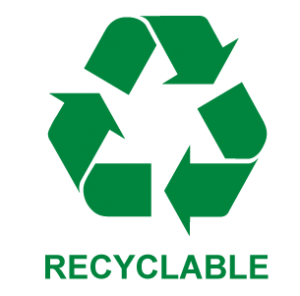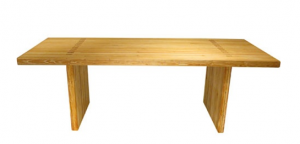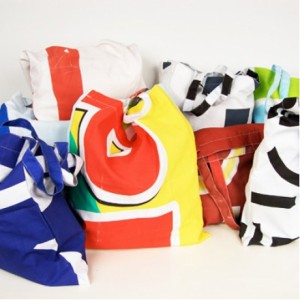Upcycling
The average American generates more than 4 pounds of solid trash every day. They account for nearly 50% of the world’s waste, but only 5% of it’s population. This stark contrast of consumption versus population has helped to spur movements like sustainability, and the now all to ubiquitous “Green” movement. Americans are beginning to realize that the rate at which they are consuming things isn’t a sustainable notion, and the idea of “Waste not, want not” is going to require more effort than just sorting your recyclables.
 In the 1990’s the three R’s of recycling became famous for their easy to remember alliteration, and their catchy three arrow logo. It was during this time that sustainability made it’s first push into schools. Assemblies were held around the country to teach children about recycling, and how they can help “mother earth”. Field trips were organized to local recycling facilities, and TV commercials featuring the mentally disabled touted these places as a bastion for those who wouldn’t ever be knowledge workers. The recycling propaganda machine was in full force.
In the 1990’s the three R’s of recycling became famous for their easy to remember alliteration, and their catchy three arrow logo. It was during this time that sustainability made it’s first push into schools. Assemblies were held around the country to teach children about recycling, and how they can help “mother earth”. Field trips were organized to local recycling facilities, and TV commercials featuring the mentally disabled touted these places as a bastion for those who wouldn’t ever be knowledge workers. The recycling propaganda machine was in full force.
Unfortunately, the specifics of recycling weren’t taught as well as the general notions of Reduce, Reuse, and Recycle. Among the missing concepts were the immutable laws of physics like, “The Conversation of Mass”, and The “Conservation of Energy”. In order for that newspaper you read, and then recycle to end up outside your door again with fresh news on it, a significant amount of energy must be imparted on it, and on top of that it must be transported both two and from where this all happens, resulting in increased emissions. As the Millennials grew up, and learned that recycling is not the end all be all solution for mother earth, they started to rebel and take the matter into their own hands.
Upcycling, or the specific repurposing of materials for another purpose, is a process which doesn’t require any additional energy. The materials should stay as they are, and not be degraded or chemically changed. It’s simply taking something and building something new and useful out of it. The ingenuity behind Upcycling is staggering. It’s a process that involves not only sourcing your own raw materals, but recovering them, and then modifying them to serve a new purpose. While Upcycling has been limited to a very small contingent of people trying to One Up[cycle] each other in trendy neighborhoods or on the internet, the curious of eye of capitalism is starting to take notice of the repurposed goods, and their appeal to the savvy well funded environmentally conscious consumer.
Jim Malone, a Brooklyn based musician recovered some discarded Bowling Alley wood, and built himself an 8 foot counter for his Brooklyn apartment. After his first piece, he describes himself as “off to the races” and spent time experimenting with all kinds of furniture and incorporating unique modern elements into his work. The pieces, available on his website, http://counterevolution.com are very cool, but also very pricey. His dining room tables begin at about $2500.
Jim certainly isn’t the only one taking advantage of the Upcycling trend. As the term gets bandied about more, it’s certain that people will then be able to find these goods. Google Trends, a popular search phrase analyzer doesn’t even recognize “Upcycle”, only it’s predicate form “Upcycled” and only has data about the term starting in 2010. As the ubiquity of this trend increases, it’s likely we’ll see retailers switch over from the current nomenclature of “Repuposed” or “Recycled” to the now more fashionable term “Upcycling”.
One such retailer that has started to monetize the trend is Poketo. Named after the founders grandmother’s mispronunciation of “Pocket”. Ted Vadakan and Angie Myung have taken their 7 year old company which has the mission statement to “promote the work of top international artists by showcasing original artwork through their fun and accessible wares.” They’ve created an entire section of Upcycled totes and bags. The prices range from just $19.00 for a bag made out of a colorful South Korean street banner, all the way to $250.00 for a bag made out of a man’s suit and shirt. It’s not a stretch that well to do fashionistas will be adorning these totes with skinny vintage ties complete with Windsor knots to complete the look; it looks great and is a terrific nod to feminist ideals.
As smaller retailers continue to create cool and unique products, it’s inevitable we’ll see larger and larger players start to get into the game. One of the great barriers to entry of Upcycling is that every item is unique. As larger players manage to source more and more raw material for Upcycling, it won’t be surprising if we see actual upcycled items in large stores, or more likely, Upcycling inspired items that feature pseudo-unique qualities along with a gimmick about “For every item like this you purchase, a donation will be made to …” or “This garment has been made using sustainable technologies and green methods…”
Either way, look for Upcycling to make a splash in the retail and fashion world in 2011.


